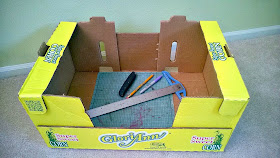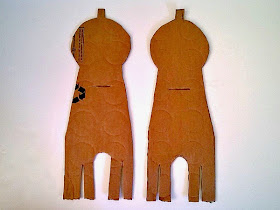For the special occasion, we took a vote in our house and unanimously decided she was the Best Taita In The World, for many reasons of course, but we each had a favorite -
she makes the most amazing mubatan
she gives the best hugs
she can hunt down a bargain like a pro
she knows a way to a son in law's heart is through waraq' 3inab
she is a brainiac with a phD
Honestly, the list can stretch for miles and miles and miles. We wanted to make her a little present for her birthday to let her know we love her.
She is in transition and can't have too much stuff in her house. She is also in need of a little color in her life right now, so we decided to make her a mini canvas painting using painter's tape, although some might call it packing tape, paint and math.
These projects are all the rage over in Pinterest right now.
Except instead of randomly placing our painters tape on our canvas, we decided to write Allah, which is the Arabic word for God. It is used by Muslims, Christians, and Jews who speak the Arabic language. It is written from right to left as الله .
 |
| Painters Tape Canves Art Tutorial |
My eldest daughter is the one that made the Allah painting and I took photos of the process to share with you in case you'd like to make your own.
4x4 inch Canvas
Acrylic Paint
Painter's tape
Newspaper
Ruler
Pencil
Paintbrush
Xacto
Cutting Mat
First we laid out our painter's tape on the cutting mat and used the xacto to cut three equal lines. We found ourselves having to measure quite a few things in thirds.
We then measured a third of the way down and lightly made marks on both sides of the mini canvas. I love these mini canvases and buy them in bulk every time there is a 50% off coupon at my local craft store. I've used them before on our Mini Canvas Minarets Tutorial.
We picked up one of smaller pieces of painters tape and placed it between the two marks. Make sure you press down hard so no paint leaks through later.
On the larger side of the canvas, make markings a third of the way on the other end.
Cut off another piece of painters tape from your mat and place it like the photo below.
Once all your pieces are laid our flat, start painting one end of your canvas with blue paint.
Stop about halfway, making sure your whole canvas is completely covered in blue.
We didn't wash our brush, simply squirted a little green paint on the newspaper and started painting it into the blue, blending it in gently. Then we concentrated on painting the rest of the canvas solid green.
We let it dry overnight, and then took off the tape.
Yalla, what do you think? I hope she likes it.
Other than drying time, the project took us no time to make, but was still made with lots of love. I bet you can make a whole batch of them and give them out as Eid favors at your next end of Ramadan party.
(Please be respectful where you place your Allah canvas.)
For more handmade artwork celebrating Allah's name, please visit
I Love Allah This Much Card
Allah Monogram Button Art Tutorial
























































